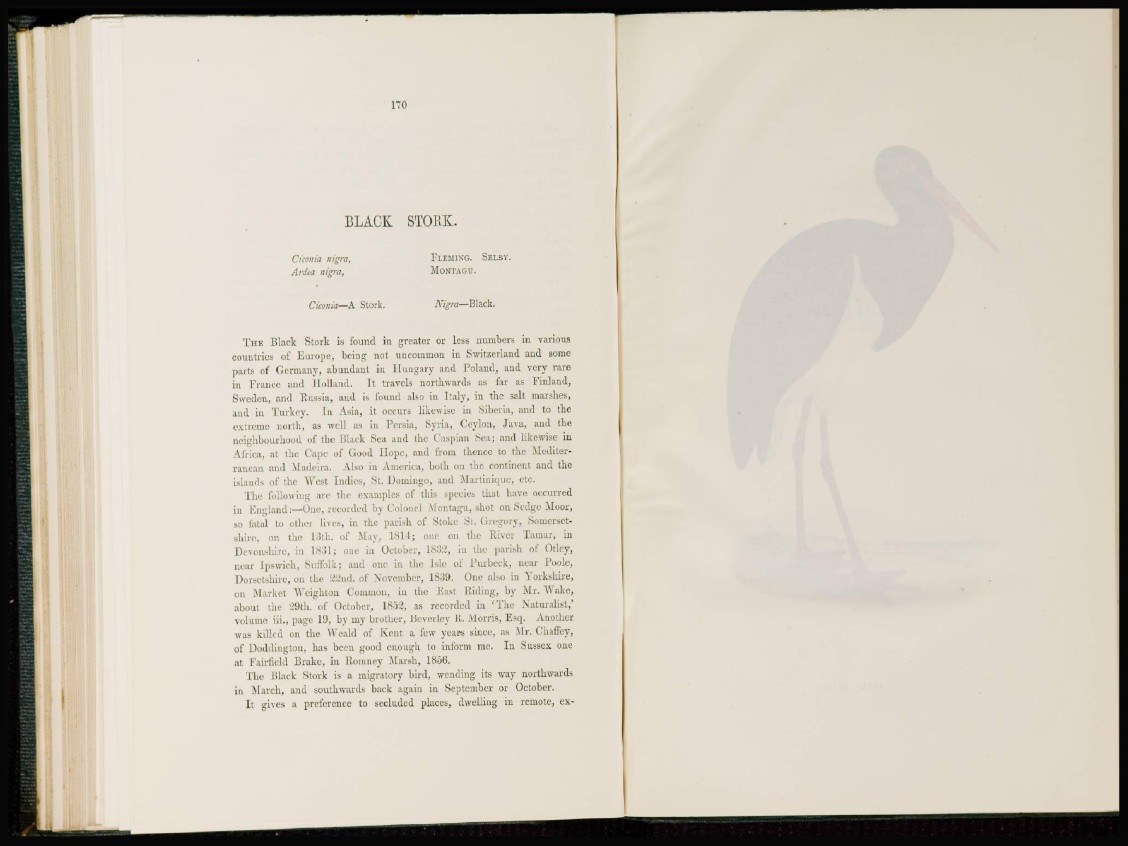
BLACK STOKK.
Ciconia nigra, FLEMING. SELBY.
Ardea nigra, MONTAGU.
Ciconia—A Stork. Nigra~-Black.
THE Black Stork is found in greater or less numbers in various
countries of Europe, being not uncommon in Switzerland and some
parts of Germany, abundant in Hungary and Poland, and very rare
in France and Holland. It travels northwards as far as Finland,
Sweden, and Russia, and is found also in Italy, in the salt marshes,
and in Turkey. In Asia, it occurs likewise in Siberia, and to the
extreme north, as well as in Persia, Syria, Ceylon, Java, and the
neighbourhood of the Black Sea and the Caspian Sea; and likewise in
Africa, at the Cape of Good Hope, and from thence to the Mediterranean
and Madeira. Also in America, both on t he continent and the
islands of the West Indies, St. Domingo, and Martinique, etc.
The following are the examples of this species that have occurred
in England:—One, recorded by Colonel Montagu, shot on Sedge Moor,
so fatal to other lives, in the parish of Stoke St. Gregory, Somersetshire,
on the 13th. of May, 1814j one on the River Tamar, in
Devonshire, in 1831 j one in October, 1832, in the parish of Otley,
near Ipswich, Suffolk; and one in the Isle of Purbeck, near Poole,
Dorsetshire, on t he 22nd. of November, 1839. One also in Yorkshire,
on .Market \\ eighton Common, in the East Riding, by Mr. Wake,
about the 29th. of October, 1852, as recorded in ' T h e Naturalist,'
volume hi., page 19, by my brother, Beverley It. Morris, Esq. Another
was killed on the Weald of Kent a few years since, as Mr. Chaffey,
of Doddington, has been good enough to inform me. In Sussex one
at Fairfield Brake, in Romney .Marsh, 1856.
The Black Stork is a migratory bird, wending its way northwards
in March, and southwards back again in September or October.
It gives a preference to secluded places, dwelling in remote, ex